600 Yıllık Miras
Geçmişten Günümüze
Shibari tarihine hakim olmak için tüm disiplinleri, shibari tarihi altında incelemeye çalışacağız.
Rope Bondage Disciplines
Hojojutsu
Kinbaku
Shibari
Fusion (Western)
What is Shibari? ? sorusuna uzun bir cevap sizi bekliyor. Shibari tarihçesi şeklinde atılan başlığa rağmen temel kavramın “Bondage” olduğunu hatırlatmak isteriz.
Shibari, kendi altında farklı disiplinlerle adlandırılır ve kaynak, gelişim süreci, tarihsel faktörler gibi etkenlerle de doğu / batı şeklinde iki bölüm halinde tasnif edilir. Batı (Western) Bondage diye bilinen “Fusion Bondage / Shibari” geleneksel Japon Shibari (Doğu) formlarından farklılık gösterir. Geleneksel doğu disiplinleri de kendi arasında ve farklı görüşler sebebiyle Shibari ve Kinbaku gibi disiplinlerle ayrıştılır.
Shibari tarihine hakim olmak için tüm disiplinleri, shibari tarihi altında incelemeye çalışacağız.
Hojojutsu
Kinbaku
Shibari
Fusion (Western)
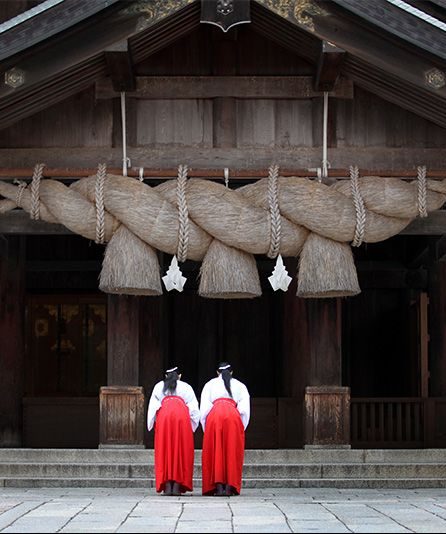
İp ile esaret altına almak antik çağlardan bu yana geçerliliğini korumuş, arkeolojik kalıntılarda izlerine rastlanmıştır. Fresklerde, çini ve vazolarda, heykellerde görülen bağlama eylemi, toplumlar arasında kültürel bir miras olarak daima yer almıştır.
Ama bir kültür var ki shibari ’nin; savaş sanatından erotizme, erotizmden bir performans sanatına evrilmesinde yüzlerce yıllık bir mirası sırtlanmıştır. Japonya’da ip ve düğüm aslen günlük yaşamın kültürel bir parçasıdır. Kimi zaman kötülüğe karşı shimenawa denilen tılsımlarla Şinto mabetlerinde, kimi zaman Tome-ishi olarak bahçelerde ve kaldırımlarda, kimi zaman bir dilek taşı gibi verilen hediyelerde ip ve düğümlere rastlamak mümkündür. Bunun yanında geleneksel ve kişisel kullanımda da izlerine rastlanır. Kimonolardan, bambuları birbirine bağlamaya, tekne yapımından, bahçe düzenlemeye kadar pek çok alanda görülebilir.
Tarihi kayıtlar shibari’nin, yeni evliler için cinsellik eğitimi amacıyla basılan Japon erotik eserleri Shunga’larda kinbaku tasvirleri görüldüğünü belirtir. 1814 yılında Edo döneminde yapıldığı düşünülen, (Katsushika Hokusai ‘nin) “Balıkçının Karısının Rüyası” kinbaku ve shibari için ilk referans olarak kabul edilir. Shunga kitaplarında görülen ve Ukiyo-e şeklinde yapılan bu baskı, ahtapot tarafından ele geçirilen kadının coşkusunu betimler. Burada ahtapotun kollarının kadının vücudunu bir ip edasıyla doladığı resmedilmiştir.
The dream of the fisherman’s wife, 1814 / Katsushika Hokusai
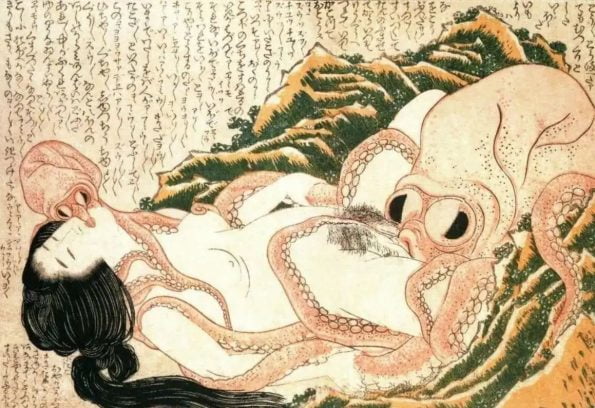

Tokugawa bakuhu keijizufu, Meiji (1893), Özel Koleksiyon’da yayınlandı. Edo Döneminde suçluların, soruşturma için eski Edo Tenma-cho hapishanesinden Machi bugyo’ya taşınmasını tasvir ediyor.
Günümüz modern Shibarisini anlamak için atası olan hojojutsu’nun kısa tarihine bakmamız gerekiyor.
1400’lerde popülerlik kazanmış olan Hojojutsu (hojo-jutsu); bir kişiyi ip veya halatla esaret altına almak için, bir çok ekolden, birçok farklı malzeme, teknik ve yöntemi kapsayan Japon savaş sanatıdır.. Torinawajutsu ve Nawajutsu gibi isimlerle de anılmaktadır.
Hojōjutsu iki geniş kategoriye ayrılabilir. İlki, Hayanawa. “Hızlı ip” anlamına gelen, genelde 3-4 mm’lik iplerle mahkumların yakalanması ve bağlanması tekniği olan hayanawa, samurayların kılıç kınlarına sararak taşıdıkları sageo denilen kordonlarla yapılırdı. Kolluk kuvvetlerinde ise, bu ipler küçük desteler halinde taşınırdı.
İkincisi olan Torinawa (ele geçirme-ipleri) ise, mahkumun vücudundan, boynundan ve kollarından geçirilirken ipin bir ucu mahkumun canını yakacak şekildi sarılarak yapılırdı. Bu genelde kolluk güçleri tarafından tutuklama sırasında ve mahkum karşı koyarken gerçekleştirildiğinden hızlıca yapılması gerekiyordu.

Toyotomi Hideyoshi (1539 – 18 Eylül 1598), 120 yıllık siyasi parçalanmanın ardından ülkeyi yeniden birleştiren Japonya’nın lideriydi.
Bu dönemde artan suç oranları, kamu düzenini sağlamak için teşkilatlanmayı gerektirmiş ve ilk yerel kolluk kuvvetleri oluşturulmaya başlanmıştır. Metal işçiliğinin zor olduğu bir coğrafyası olan Japonya, tüm metal kaynaklarını savaş araç gereçlerine ayırmış bu da haliyle kolluk kuvvetlerini halat gibi hızlı temin edilen araçlar kullanmaya teşvik etmiştir.
Durum böyle olunca ip kullanılarak icra edilen eski bir savaş sanatı, kolluk kuvvetleri tarafından tozlu raflarından tekrar çıkartılmış ve kullanılmaya başlanmıştır.
1192 yılında Kamakura Shogunluğunun kurulmasıyla başlayan bu savaşçı dönemi, savaş sanatlarının gelişmesi için zemin hazırlamış, Hojōjutsunun geleneksel askeri disipline yerleşmesi hızlanmıştır. Muromachi döneminden 1603 yılında kurulan Edo Shogunluğuna kadar olan süreç savaşlarla geçer.
27 yaşında general ve Japonya’nın 59 yaşında hükümdarı olan Toyotomi Hideyoshi (17 Mart 1537-18 Eylül 1598), Japonya’yı birleştirir ve köleliği kaldırarak bir asırdan fazla süren iç savaşı sona erdirir. Hideyoshi, Samuray için bir sınıf sistemi ve güçlü bir etik sistem kurarak, Samurayların eğitimlerine, Hojojutsu’yu da dahil eder.
Temel amaç ne olursa olsun, bağlama yöntemindeki görsel ve estetik kaygıların yanı sıra, Japon toplumunun ihtiyaç ve etik anlayışına da dikkat ediliyordu. Tutuklanan kişinin daha önceden bir mahkumiyeti yoksa, güvenli bir şekilde kısıtlanmasına izin veriliyor ama halk önünde onu küçük düşürecek şekilde bağlanmasına izin verilmiyordu. Yapılan bağı düğümlerle sabitlemek yerine, memur mahkumun kontrolünü elinde tutmak için ipin serbest kalan ucundan tutar ve mahkumun arkasında yürürdü.
Torinawa’da da, hayanawa da olduğu gibi birçok farklı ölçülerde ve genellikle kenevir ipler tercih edilirdi. İpin kalınlığı ortalama 6 milimetre çapındayken, uzunlukları 20 metreye kadar ulaşabiliyordu. Bu, hapsetme yerine ulaşım, yasal işlemler sırasında hareketini kısıtlama ve –özellikle ağır suçlar söz konusu olduğunda– mahkumun infazı öncesinde halka teşhir etmek için hayanawa ile karşılaştırıldığında daha güvenli ve uzun vadeli bağlama sağlamak için kullanılırdı.
Hojōjutsu, modern Japon polis memurlarının eğitim müfredatının bir parçası ve dünyada ise diğer Japon geleneksel dövüş sanatlarını öğreten jujutsu okullarında ileri bir teknik şeklinde aktarılmaya devam etmektedir.
Hojojutsu’nun Japonya’da 1400’lü yıllarda popüler olmasının sebeplerini anlamak için o dönem Japonyasına bakmak gerekir. Savaşçı dönemi olarak adlandırılan 1192 – 1590 yılları, Japonya’nın dış akınlar tarafından tehdidi, ayaklanmalar ve derebeyler arasındaki savaşlarla geçer.
Hojojutsu, temelde Kinbaku ve Shibari’nin kökeni olarak bilinmesine rağmen, bu disiplin hala uygulanmaktadır. Hojo-jutsu teknikleri gerçekte bağlama ve esaret altına alma hızını kavramak isteyen SM çevrelerinde öğrenilmeye ve geliştirilmeye devam etmektedir. Hojo-jutsu’da, newaza olarak bilinen teknikler, diğer dövüş sanatları disiplinlerinden ödünç alınmıştır.
Hojojutsu uygulayıcıları farklı türde ip ve ölçüler kullanırlar;
1603 yılında kurulan Edo Shogunluğu döneminde, güçlü olan samuray sınıfı, 17. yy 19. yy arasında hojojutsu’yu kullanmaya ve geliştirmeye devam eder. Resmi Tokugawa kanunlarına göre halka açık cezalandırmalar, suçluların suçlarına ve ait oldukları toplumsal sınıflara göre yapılmaktaydı. Halkın önünde yapılmasıyla, caydırıcı olması ve ibret alınması amaçlanıyordu.
Bu sembolik anlamının yanı sıra o dönemlerde de sinirler ve damarlara bir düğümün gelmemesine özen gösteriliyor, uzun süre açık bir alanda topluma sergilenmesi sağlanıyordu. Resmi Tokugawa yasalarının hojojutsu uygulaması hakkındaki hükümleri dört kısa maddeden oluşmaktaydı;

Hojojutsu, Ittatsu Ryu Okulu, “Shin Nijuu Hishi” (gerçek çift elmas / true double diamond) ve “Shin Tonbo” (gerçek yusufçuk/real dragonfly) bağları. Fujita Seiko’dan Zukai Hojoujutsu.
Kural 2 ve 4, kinbaku ve shibarinin kökenlerini anlamak açısından önemlidir. Bu kurallar günümüzde de hala geçerlidir .
1603 – 1868 yılları arasında Edo döneminde, 150’den fazla hojojutsu okulu kuruldu. Farklı bölgelerde kurulan okullarda, farklı bağlama yöntemleri geliştirildi. Çeşitli bölgelerin kendine has, onları tanımlayabilecek düğüm ve bağları vardı. Teknikler hem insan anatomisinin derinlemesine anlaşılmasını hem de estetik açıdan hoş düzenlemeler yaratma arzusunu ortaya çıkardı. Bundan sonraki dönemlerde Hojojutsu’nun birçok teknik ve tarzı, modern Japon kinbakusunu derinden etkiledi.
Edo döneminin başlarında yorgun düşen Japonya tamamen kendini dış dünyaya kapamış ve yaralarını sarmaya başlamıştı. Bu süreç tüccarlar ve ticaretin gelişmesi, okuma yazma oranının artması, sanatın gelişmesi gibi pek çok konuda bir Rönesans havası estirmiş, bu dönemde asilzadelerin esir kadınları aşağılamak için kinbakuyu erotik bir araç olarak kullandığı da görülmüştür.
1867 yılında Edo döneminin kapanmasıyla birlikte Meiji Restorasyonu gerçekleşir ve Edo olan başkentin adı Tokyo olarak değiştirilir. Siyasal ve sosyal alanlarda ve insanların yaşam tarzlarında büyük değişimler meydana gelir.
Meiji dönemi reformlarıyla Japonlar, sadece Hollanda ve Çin ile yaptıkları ticareti diğer Avrupa ülkeleriyle de geliştirir.
Sosyal yaşantının büyük unsuru olan kabuki tiyotroları rağbet görmeye ve birçok geleneksel kabuki tiyatrosu, ip ve acı konulu erotik gösteriler sahnelemeye başlar.
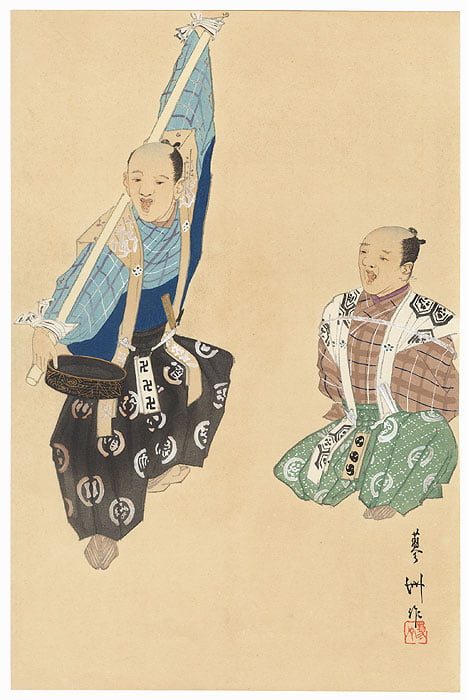
Kabuki Tiyatrosunda Bo-Shibari”
Kabuki tiyatrolarında sahnelenen oyunlar erotik olmasına rağmen aşırıya kaçmıyor ve cinsellik barındırmıyordu. 1900’lü yılların başlarında, Edo dönemi dramalarını tasvir eden kabuki oyunları, hojojutsu’nun basitleştirilmiş bir versiyonunu performanslara dönüştürmeye başladı. Bu, düğümleri izleyicilere daha görünür ve çekici kılmıştı. Yaratıcı ve estetik yönleriyle sahnelenen oyunlar hala günümüz kinbakusunun ilk örnekleri olarak değerlendirilir.
Meiji Dönemi ortasından itibaren “Soushi Shibai” (Kahraman’ın Dramı / Hero’s Drama) adlı bir tür drama gelişir. Aslında amaç, rejimden gelen baskıya karşı çıkan isyan kahramanlarını betimlemek, özgürlük ve medeni hakları savunmaktı. Daha sonra, politik duruş değişir, esaret ve dramatik işkence sahneleriyle erotizm eklenerek farklı bir drama türüne evrilir.
Bu sırada Avrupa’da Marquis de Sade ve Leopold von Sacher-Masoch’ın etkileri, sadece cinsel ve erotik anlamda değişiklikler yapmamıştı. 1880’li yıllarda psikanalizin yükselişiyle, sadizm ve mazoşizm deyimleri ortaya çıkmış ve ilk ciddi akademik makale ve araştırmalara konu olmuştu.
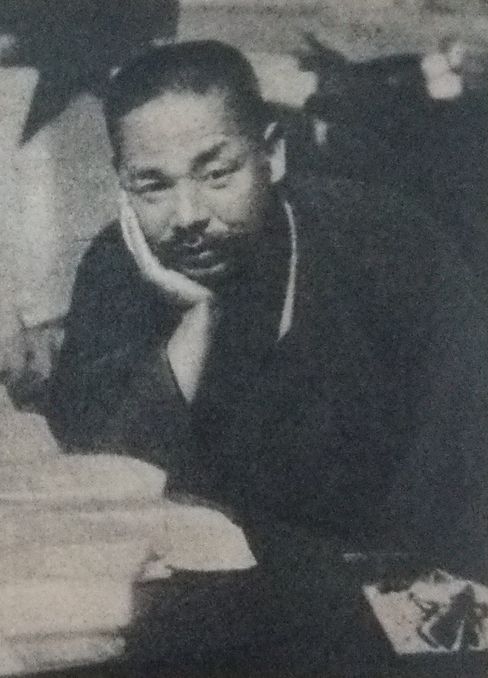
Ito Seiu
Birinci Çin-Japon Savaşı’ndan sonra, 1896 Haziran’ında Tokyo’daki Hongo Haruki-za Tiyatrosu “Nisshin Senso – Youchi no Kataki-tan” adlı bir tiyatro eseri sahneledi. Birkaç Japon hemşirenin Mançurya’daki Çinli askerler tarafından işkence görüp küçük düşürüldüğünü, ancak işkencecilerini affettiğini konu alıyordu. Bu drama, milliyetçiliğin koruyucu şemsiyesi altında cinsel zulmü bahane olarak kullanıyordu. Bu gösterilerin birinde seyirciler arasında on dört yaşında genç bir adam bulunuyordu ve bu gösteri onu derinlemesine etkilemişti. Yıllar sonra, bu genç “Father of Kinbaku” anılacak ressam, fotoğrafçı ve araştırmacı olan Ito Seiu ‘dan başkası değildi.
Japonya’da 1928’de “Seme no Kenkyu” (İşkence Çalışması) adlı ilk kinbaku fotoğraf kitabını yayınladı ve tiyatro gösterileri düzenledi, bilinen ilk suspension çalışmalarını ve resimlerini de bu dönemde gerçekleştirdi. Sonunda modern Japon kinbakusunun babası olarak tarihe geçti.
Kinbaku, Seiu Ito sayesinde 20. Yüzyılın başlarında daha erotik ve cinsel hale gelmişti. Ukiyo-e stilinde ürettiği eserleri, bağlı, saçı başı dağınık, işkence görmüş, çıplak veya zorla yırtılmış elbiseli kadınları konu alıyordu.
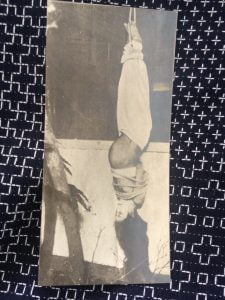
Seme no Kenkyu’dan bir fotoğraf.
Seiu Ito’nun “kar işkencesi” ve “annenin ters asılması” gibi çalışmaları Yomikiri Romance And Kitan Club gibi Japon dergilerinde yayınlandı. Bu çalışmalar Japon toplumunda büyük tartışmalara neden oldu. Bu tartışma ile mücadele etmek Seiu Ito’yu hem maddi hem de manevi bir iflasın eşiğine getirdi. İkinci dünya savaşı sırasında, Amerikan ordusunun düzenlediği büyük Tokyo hava saldırısı sırasında, Ito tüm eserlerini kaybetti.
20’li ve 30’lu yıllarda diğer sanatçılar da, avangard Ero-Guro (“erotik grotesk”) akımıyla birlikte benzer temalar işlemiş, ancak Ito, açıkça sadomazoşist temalı çalışmalar yapan ilk kişi olmuştu.
Japonya ve Avrupa özellikle de Almanya ile kültürel ve askeri alanlarda yakınlaştıkça yirminci yüzyılın başlarında 1920’lerde ve 1930’larda Almanya’nın Weimar kültüründen etkilenmiş, anti-militarist ve muhalif bir sanat akımı “ero-guro” ortaya çıkmıştı. İkinci Dünya Savaşı sırasında bu akımla ilgili bir sanat eseri ortaya konulmadıysa da, savaş sonrası Japonya’sında esaret, işkence ve erotik temalarla yeniden ortaya çıkmıştı.
Kinbaku’nun batıda duyulmasına, ero-guro (groteske erotik – ero guro nansensu) akımının etkisi büyük olmuştur. Hem Almanya hem de Japonya’nın, askeri yaklaşımlarında benimsedikleri politikalarla sanat, sanatçı ve halkı zorunlu, dayatılmış, belirlenmiş bir ürüne mecbur bırakmaları, militarizmin yoğun baskısı, toplumda muhalif bir kesim oluşmasını sağlamıştı.
İşte böyle bir atmosferde ortaya çıkan avangard ero-guro; bir başkaldırı, sanata saygısızlığa bir protesto, şehvet ve cinsel isteği aslen kötü şeyler olarak değerlendiren rejimi eleştirir durumdaydı.
Japonya’daki bu gelişmelerin ışığında bakıldığında “Seme no Kenkyu” nun bir işkence çalışması olduğunu fark etmekte fayda var.
1950’lerde batı dergileri Ito’nun çalışmalarını keşfetti ve çalışmalarını yayınlamaya başladı. Hala tartışmalı olsa da, Kinbaku hem Doğu hem de Batı toplumunda popülerlik kazandı ve 1960 yılında Japon Sanatçılar Derneği, sanatı için Seiu Ito’ya ödül verdi.
“Sadizm” ve “mazoşizm” terimleri, 1950’lerde Japonya’da yaygın bir şekilde kullanılmaya başlanmıştı. BDSM terimi ise Batı’da 1980’lerde ortaya çıkmış ve anılmaya başlanmıştı. Görüldüğü üzere BDSM’nin gelenekselleşmesinden çok önce Japonya’da farklı unsurlarla anılan “sadizm” ve “mazoşizm” kavramları mevcuttu ve aynı zamanda yöntem olarak benimsenmişti.
Günümüz modern BDSM’sinin S&M tanımlanan bölümü için, Japon yorumunun işkence üzerine kurulu olmasının nedeni, Seiu Ito’nun çalışmalarıydı. Bu, acı ile birbirine bağlanmış olmanın, bir bağlamda duygu akışını ve yoğunluğunu betimleyen, Japon tarzı estetiğin derinliklerine dayanan “acı çekmenin güzelliği” idi.
Bu anlamda, Kinbakunun, çeşitli işkence yöntemlerinden biri olarak anılmasını garipsememek gerekir. Birini bağlamak, sadece kaçmasını engellemekle kalmaz, aynı zamanda aşağılanma ve işkence için de kullanılabilir.
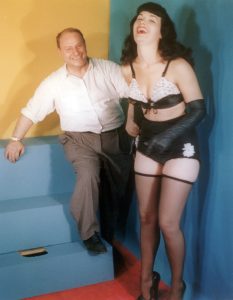
American model Bettie Page (1923 – 2008) with photographer Irving Klaw (1910 – 1966), circa 1955. (Photo by Archive Photos/Getty Images)
Bu yıllarda, Amerika’da erotik dergiler korsan yayınlanıyordu. İlk bondage temalı fotoğraflar John Willie ve Irving Klaw tarafından çekilip basılmış ve bu fotoğraflar günümüz fetiş kültürünün ilk profesyonel çalışmaları kabul edilmiştir. Ama bu yıllarda da batı henüz kinbaku ile tam anlamıyla haşır neşir olmamış olsa da bir efsanenin doğuşuna şahitlik etmişti: Betty Page.
Bettie Page bir pin-up kızı ve Irving Klaw’ın gözdesiydi. Yüzlerce erotik, fetiş ve bondage temalı çekimde modellik yaparak farklı cinsel eğilimlerin Amerika’da yayılmasını ve popüler olmasını sağladı.
Aynı yıllarda, savaştan yenilgi ve yıkımla çıkan japonya 50’ler ve 60’larda, erotik bir devrim yaşamaya başladı. Kinbaku konulu, ilk çıplak esaret fotoğraflarını yayınlayan Kitan Club ve Yomikiri Romance gibi dergiler 1950’lerde Japonya’da oldukça popüler olmuştu.
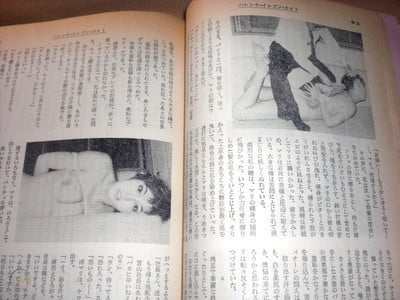
Item Vintage Japanese BDSM Kinbaku Magazine KITAN CLUB 4/1969 Shibari Oniroku Dan
Tüm dünyada bir fenomen olan Kitan Club dergisi 60’lı yıllarda altın çağını yaşamaya başlamıştı. Bu dergi sık sık seksüel, erotik ve egzotik gelenekleri, zaman zaman öyküleri ve hatta bilim kurgu ile ana temaları birleştirerek kullanmış, alternatif içerik, konu ve tercihlere dikkatleri çekmişti.
Bugünün bakış açısına göre, bu dergi, Japon SM kültürünün biçimlendirici döneminin değerli bir tarihi temsilcisi kabul edilebilir. Ayrıca, Kitan Kulübü, kinbaku kültürünün destekçisi olarak da hareket etti. Yazar, illüstratör ve fotoğrafçı gibi görevlerle Suma Toshiyuki, Tsujimura Takashi, kinbaku araştırmaları ve yazılarıyla kinbakunun tüm dünyada tanınmasına katkı sağladı.
Kitan kulüp, gelecek nesillere adeta bir ilham kaynağı ve okul oldu. Pek çok çizer, yazar ve fotoğrafçı bu dergi sayesinde yeni çalışmalar yaptı ve radikal fikirler geliştirdi.
“Nawashi” teriminin ilk kez 50’li yıllarda Tsujimura Takashi tarafından Kitan Club Magazine’de kullanıldığına inanılmaktadır.
1962’de Dan Oniroku’nun “Hana to Ebi” adlı romanı (Flower and Snake) seri yayınına Kitan Club’da başladı.
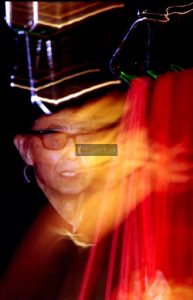
Osada Eikichi
1965 yılında, Osada Eikichi, tüm S&M dünyasını şaşkına çeviren ilk sahne performanslarına Kitan Kulüp çatısı altında başladı. Şimdilerde kinbaku sahne performansının öncüsü kabul edilen Osada Eikichi’nin bu gösterileri S&M türünün ilk deneysel dramalarıdır. 60’ların sonları ve 70’lerin başlarında, “Pembe Sinema / Pink Movies” filmlerinin popülerleşmesiyle birlikte, Konuma Takashi gibi insanlar, kinbaku yönetmenlerinin film yapımlarındaki rolünü üstlenmeye başladılar.
Bu sırada Avrupa ve amerika’da cinsel devrim hareketleri dramatik bir şekilde yükselmiş, 1969 yılında yaşanan Stonewall ayaklanmasıyla her şey kökten değişmeye başlamıştı. Bu yıllar kinbakunun gölgelerden çıkmaya ve daha kamusal alanlarda görülmeye başlandığı ilk yıllar oldu.
70’li yıllardan sonra kinbaku artık daha görünür olmuş, kimi performans ve fotoğraf sanatçıları tarafından tüm dünyanın daha yakından ilgilendiği bir kültür haline gelmeye başlamıştı. Bu yıllar batı ve doğunun stil ve tekniklerinin birleştiği bir dönem oldu. Fusion shibari olarak adlandırılan bu dönemde, Japon gelenekçiliği ile batı erotizmi ve estetiği harmanlanmış, Irwin Klaw And John Willie bondage mirası birleştirilmişti.
1980’li yıllarda Kinbaku ustaları erotik kinbaku konulu videolar çekmeye başladılar. Bu dönemde bir kinbaku ustası aynı zamanda oyuncu, yapımcı ve yönetmen olabiliyordu.
Modern kinbakunun batıda tanınması ve bir sanat formu haline gelmesinde Nobuyoshi Araki’nin katkıları küçümsenemez.
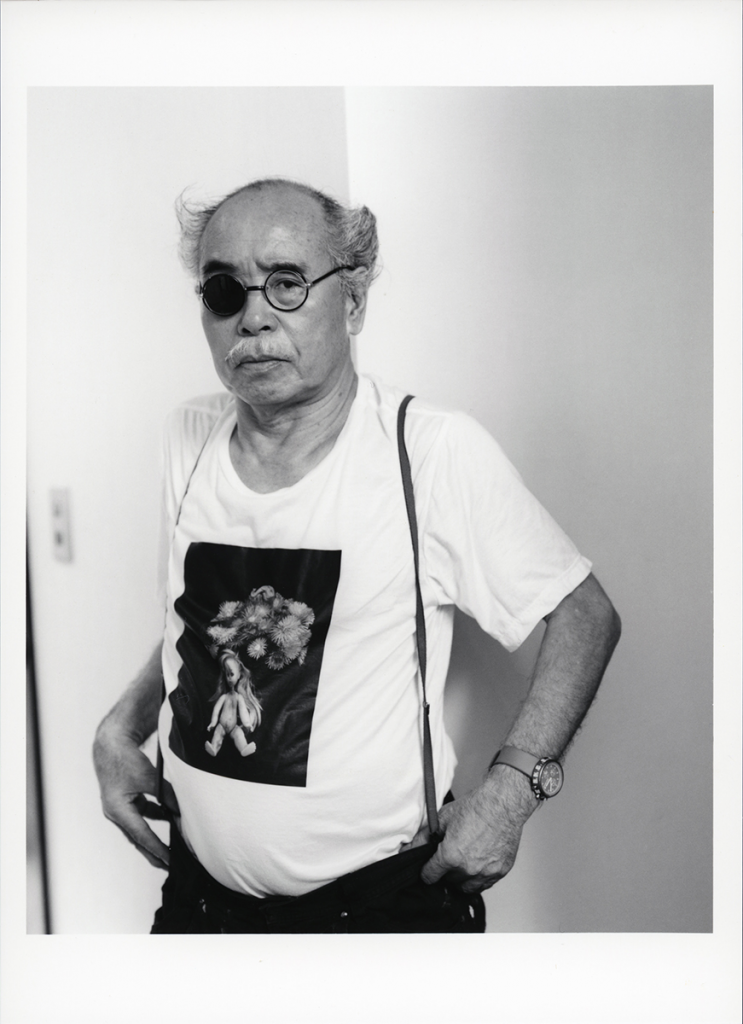
Nobuyoshi Araki
Kinbakunun veya esaretin fotoğrafçısı olarak tanımlanan Araki, fotoğrafla ilgilenmeye üniversite yıllarında başlamış olsa da profesyonel olarak bu konuda isminin duyulması 90’lardan sonradır. Karısının 1990 yılında ölümü Araki’nin sanatında bir dönüm noktası yaratmış ve bundan sonra yaşam ve ölüm arasında ikisini de barındırdığına inandığı cinselliği yeniden tanımlamaya çalışmıştır.
Benlik, Yaşam, Ölüm adını verdiği Kinbaku serileriyle çağdaş sanatın önemli isimleri arasına girmiştir. Eserleri Tate Modern, San Francisco Modern Sanatlar Müzesi gibi önemli müzelerde sergilenmekte ve önemli galeri ve müzayede şirketleri tarafından temsil edilmektedir.
Araki, bağlanmış bazen asılmış çıplak kadınları cinsellikten çok aşk ve erotizmin sembolize etmek için kullandığını söylüyor. Bir kadının sadece bedenini iplerle bağladığını çünkü kalbini bağlayamayacağını söylüyor. Bu ifade ile asıl esaretin manevi esaret olduğunun altını çiziyor. Sanatçı ben kadınları bağlarken onlara sarılıyorum diyor. Ben esareti bir tür bağlanma duygusuyla özdeşleştiriyorum diyerek görüntüdeki sert, fetiş ve uç hisleri, aşk, erotizm ve bağlılık duygularıyla ifade ettiği alt okuma ile yumuşatıyor.
Araki gibi sanatçılar sayesinde günümüzde shibari sadece BDSM’in bir parçası olmaktan daha çok bir performans ve sanat unsuru haline gelmiş, pek çok sanatçı shibariyi farklı şeyleri anlatmak için kullanmış ve kullanmaya devam etmektedir.
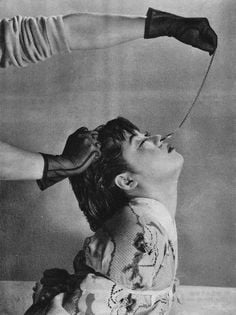
Cultura Inquieta – Kitan Club Japanese Prints, Club Magazine, Printing Ink, Dark Photography
Savaş sonrası 50’ler ve 60’lar, Kitan Club dergisinin altın çağıydı. Bu dergi sık sık seksüel, işkence, taciz ve egzotik gelenekleri, zaman zaman öyküleri ve hatta bilim kurgu ile ana temaları birleştirerek kullandı. Ustaca bazı alternatif zevk ve tercih tarzlarına dikkat çekti. Bugünün bakış açısına göre, bu dergi, Japon SM kültürünün biçimlendirici döneminin değerli bir tarihi temsilcisi kabul edilebilir. Ayrıca, Kitan Kulübü, kinbaku kültürünün destekçisi olarak da hareket etti. Yazar, illüstratör ve fotoğrafçı gibi görevlerle çalışan Suma Toshiyuki, Tsujimura Takashi, kinbaku araştırmaları ve yazılarıyla katkı sağladı.
Baskı teknolojisinin gelişmesiyle birlikte, fotoğraflarda yayınlamaya başladı. “Nawashi” teriminin ilk kez 50’li yıllarda Tsujimura Takashi tarafından Kitan Club Magazine’de kullanıldığına inanılmaktadır. 1962’de Dan Oniroku’nun “Hana to Ebi” adlı romanı (Flower and Snake) seri yayınına Kitan Club’da başladı.
1965 yılında, Osada Eikichi, tüm S&M dünyasını şaşkına çeviren ilk sahne performanslarına Kitan Kulüp çatısı altında başladı. Şimdilerde kinbaku sahne performansının öncüsü kabul edilen Osada Eikichi’nin bu gösterileri S&M türünün ilk deneysel dramalarıdır. 60’ların sonları ve 70’lerin başlarında, “Pembe Sinema / Pink Movies” filmlerinin popülerleşmesiyle birlikte, Takashi to the location gibi insanlar, kinbaku yönetmenlerinin film yapımlarındaki rolünü üstlenmeye başladılar. 1974’te iflasla karşı karşıya kalan Nikkatsu film şirketi, “Flower and Snake” i son şans ve çare olarak yapmaya karar verdi ve film beklenmedik bir başarı kazandı.
Kinbaku (緊 縛) “sıkı bağlanma” anlamına gelen Japonca kelimedir. Kinbaku-bi (緊 縛 美) ise “güzel sıkı bağlama” anlamına gelir. Kinbaku, Japon SM çevrelerinde spesifik, sanatsal, erotik bağlamaları tanımlamak için kullanılır. kimi baku’lar (bağlayan kişi / usta) daha duygu yüklü sahneleri tanımlamak, kimileri ise kökenlere ve geleneklere atıfta bulunmak için kinbaku kelimesini kullanmayı tercih eder. Teknik ve yöntem üst düzeyde belirgindir. günümüzde kinbaku’yu tanımlamak için bazı çevrelerin “deep binding” terimini kullandıkları da görülüyor.
Shibari kelimesi, Batı’da, esaret sanatı Kinbaku’yu tanımlamak için 1990’ların başlarında kullanılmaya başlandı. Shibari (縛 り), “dekoratif bağlamayı”, iki insanın bütünleşmesinin zarafet ve duyguyla, bambaşka bir beden farkındalığına ulaşması ve aralarında bir bağ kurulmasını ifade eder.
Shibari ve kinbaku arasında, hangisinin diğerinden daha uygun olup olmadığı hakkında çok fazla tartışma var. Bu terimleri ayırt etmek isteyen batılılar shibari kelimesini daha görsel, dekoratif ve erotik olmasına atıfta bulunmak için kullanırken, kinbaku bir bütün olarak sanatsal, esaret odaklı, duygusal pratiğe atıfta bulunur.
Kinbaku, birçoğu Hojojutsu bağlarından türetilen oldukça önemli tekniklere dayanıyor, ancak günümüz şartlarında kullanılabilmesi ve güvenli hale gelebilmesi için Hojojutsu teknikleri önemli ölçüde değiştirilmiştir.
Geleneksel görüş şudur ki ‘shibari’ terimi Japonca kelime hazinesinin batılılar tarafından yerinde olmayan ve kötüye kullanımıdır. Sözcük, Japonca’da, geleneksel esaret bağlamında / anlamında kullanılmadığını gösterir. Birçok özel bağın/düğümün isimleri arasında ‘shibari’ bulunur, ancak bu şekilde tüm aktiviteyi ve pratiği (Diamond Diamonds ‘ve’ Portuguese Bowline Knots’) olduğu gibi adlandırmak geleneksel değildir. Bunun yerine, Kinbaku geleneksel Japon esaret ve S&M çevrelerinde sanatsal ya da erotik bağlama için tercih edilen terimdir.
Bu bakış kelimenin gerçekten kitaplarda, süreli yayınlarda ve Japoncada halat esaretinin tartışılmasında kullanılan yöntemle çelişmektedir. Daha geleneksel bir görüş şudur: shibari Japonya’da erotik esaret için kullanılan ve kinbaku terimi ile değiştirilebilir bir terimdir. Itoh Seiu, 1950’lerden günümüze kadar, bir çok iyi bilinen Japon bakusu gibi, 1950’lerde bu terimi kullandı.
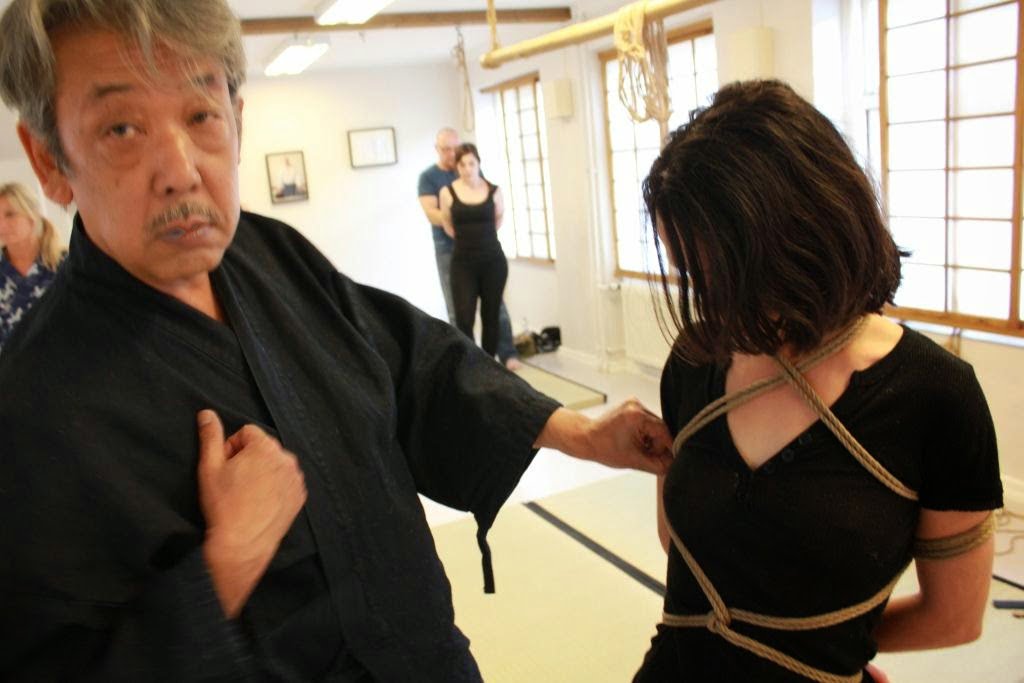
Nureki Chimuo, Yukimura Haruki, Akechi Denki, Ryuuji Takeda, Tsujimura Takeshi, Arisue Go, Randa Mai, Osada Steve, Miura Takumi, Nagaike Takeshi ve Minomura Kou (ve diğerleri). Nurkei Chimuo’nun 1980’lerin video serilerinden biri, Shibari’ye Giriş başlığını taşır. Bazı iddialar bunun bir şekilde gizlenmiş bir tanımlama olduğunu ve shibari’nin giderek artan bir şekilde Batı’dan Japonya’ya ithal edildiğini ifade eder. Çoğu Japon kinbakushi, küresel anlamda yaygın bir şekilde kullanıldığı için Shibari does not object to the term.
Shibari öznel bir deneyim olmakla birlikte cinsiyet, dil, din, beden, ırk ayrımı gözetmez. Bizim bakış açımıza göre dilimiz, rengimiz, cinsiyetimiz shibarinin kendisidir ve bununla bağ kurmak isteyen iki bedenin bütünleşmesidir. Shibari sadece seksüel bir deneyim değil, terapi, rahatlama, mücadele ve beden farkındalığı için güçlü bir araç, iletişim için radikal bir yöntemdir.
Steve Osada
Osada Steve 長 … ス 長 ー ー ィ: “… Çalışma tarzımda genellikle Shibari ile Kinbaku arasında belirgin bir ayrım yapıyorum. Shibari hakkında bir fikir edinmenin sekiz yıl sürdüğünü söyleyebilirim, ve Kinbaku’nun gizemlerini deşifre etmeye başladığımda üçüncü yılımı doldurmak üzereydim. Sensei Osada Eikichi (長 田英吉) beni öğrencisi kabul etmeye karar verdiğinde bana verilen bir fırsattan fazlasıydı ve sadece fırsat olsaydı, hala ne yaptığımı bilmeden kadınları bağlıyor olurdum. StudioSIX’teki sahnelerimde, modelle bir bağlantı geliştirmek için zaman harcar ve böylece bağların teknik yönlerini aşan duygusal bir alışveriş gerçekleştiririm. Canlı şovlar gibi diğer tüm etkinlikler ve videolardaki neredeyse tüm çalışmalarımı, Shibari şeklinde tanımlarım. Benim için Shibari, Japon tarzında ve tutarlı Japon estetiği ile bağlamanın tek gerçeğidir. “
Doğunun temelleri üzerinde gelişen batı disiplini genellikle Fusion veya Western olarak adlandırılır. Yüzyıllardır gelişen doğu disiplininden beslenmesine rağmen, kendi dinamiklerini, yöntem ve pratiklerini geliştirmiş, erotik bir boyuta taşımış ve kullanmıştır. Kinbaku ve Shibari’deki doğal güzelliklerin ve alt formlarının bir kısmı tehlikeye girmiş olsa da, bir bütün olarak bakıldığında kattığı yenilikler de vardır.
Fusion bondage (shibari) farklı türde (genellikle soft türde) ipler kullanır;
Japonya kökenli olan shibari, 20.yy’lın başlarından bu yana doğu ve batıda eş zamanlı bir gelişim göstermiştir. Seiu Ito ile başlayan bu süreç, Batı’da 19401’lı yılların sonlarında John Willie ile başlar. Willie’nin geliştirdiği G-String Tie hala üzerinde tartışılan o dönemden günümüze kadar ulaşmış tekniklerdendir.
Geçmişten Günümüze Zaman Akışını Görmek İçin Buraya Tıklayınız
[/vc_column_text][/vc_column][/vc_row]
Kama Sutra’nın japon versiyonu olan Shijuhatte’ de iki ahtapotun kollarıyla bir ip gibi dolayarak esaret altına aldığı kadın figürü (Dream of a Fisherman’s Wife) Rope Bondage’in tarihteki ilk basılı referansı olarak kabul edilir.
Seiu Ito geleneksel japon tiyatrosu ve hojijutsu’dan esinlenerek ilk ukiyo-e çalışmalarını yayınladı.
Dünya çapında bir sanatçı olan Man Ray ilk SM ve bondage temalı çalışmalarını yayınladı. Man Ray bu çalışmaları sırasında Lee Miller ve William Seabrook ile birlikte çalıştı.
Hollywood’un yarattığı çaresiz ve yardıma muhtaç kadın karakteri o denli popüler hale geldi ki, John Willie bundan ilham alarak ilk bondage magazin serisi olan “Sweet Gwendoline” ‘i yarattı.
“Kitan Club” ve “Yomikiri Romance” bondage makale, görsel ve eğitimleri ile yayın hayatlarına başladı. Bu dergiler ilk kez çıplak model çalışmaları yayınlayarak tüm SM dünyasında ses getirdi.
Irving Klaw, aralarında Bettie Page’ in de bulunduğu modellerle bondage temalı ilk fotoğraflarını yayınlamaya başladı.
Eric Stanton “House of Milan” adıyla bondage çizgi romanı ve bondage temalı videoları John Savage ile birlikte yayınlamaya başladı
Eikichi Osada, Osada Oturumlarında ilk halka açık gösterilerini yapmaya başladı. Bu Osada-Ryu’nun ilk temellerini attı.
Robest Bishop, bondage illüstrasyonlarını, John Blakemore bondage foto ve videolarını yayınlamaya başladı.
Japon SM dünyası altın çağını yaşamaya başladı. Bu dönemde Go Arisue gibi isimler çalışmalarını yayınladı.
Harmony Comminication, Jay Edward’ ın çalışmalarının da dahil olduğu bondage dergisi ve videoları yayınlamaya başladı
Haruki Yukimura SM Sniper dergisi için çalışmaya başladı. Akechi Denki performans gösterileri ve videoları çekmeye başladı.
Devonshire Productions, Simone Devon ve Brian Davis yönetiminde bondage metaryalleri yayınlamaya başladı.
Miura Takumi, Denki Akechi ile çalışmaya başladı. Akira Naka, Mai Randa ve Ranki Kazami bu dönemde ilk performans gösterilerine başladı. Nobuyoshi Araki, ilk kinbaku çalışmalarını yayınlamaya başladı.
Not a member? Create an account
Already got an account? Sign in here

